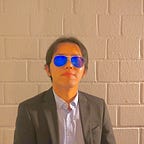Dunhuang — a brief Art Guide
Dunhuang (敦煌), an oasis on China’s ancient Silk Road, is situated in the northwest of China, where the Gobi Desert and the far eastern edge of the Taklamakan Desert region meet in Gansu Province. Not only is its location worth bragging about, the city’s name is as grand as its historical significance. The name “Dunhuang” (“敦煌”) was given in the Han Dynasty. In Chinese “Dun” (敦) means grandness and “Huang” (煌) means prosperity.
The ancient town lies at the western end of the Hexi Corridor, which used to be an important stop-over point on the Silk Road. However, nowadays it’s a vestige of the Silk Road, where caravanserai teamed with merchants and Bactrian camels, the economy boomed and Buddhism flourished. More than anything, though, Dunhuang has become synonymous with one of the world’s most spectacular cultural sites — the Mogao Buddhist cave temples.
This historical source can be traced back to the fourth century AD. From then to the 14th century, Dunhuang evolved into a crossroads of humanity thanks to its strategic geographic position. The Mogao caves, located 16 miles (25 km) outside of the oasis of Dunhuang, became a visual repository of the religious, artistic, economic, political and social life of the region, illustrated in wall paintings, portrayed in sculptures, and reflected in objects and documents found inside the caves.
After visiting some Dunhuang exhibitions, I give some photos of the exhibits for everyone to have a glimpse.
Based on the famous painted statues and murals in Dunhuang Grottoes, it breaks the form of static exhibitions of sculptures and murals, and innovatively interprets classic statues such as Maitreya with crossed feet in Beiliang, reclining Buddha in Tang Dynasty, and Buddha sitting in a seated way with light and shadow. The dignity and majesty of the main Buddha statue, the humility and obedience of the disciples, the graceful and graceful Bodhisattva, and the brave and majestic king of heaven fully reflect the inner characters of different characters and demonstrate the superb sculpture level of the prosperous Tang Dynasty.
The other most famous story from Dunhuang is the Deer of Nine Colors. It tells a tale: In ancient times, a Persian merchant gets lost in a great windstorm. Suddenly, though, a spiritual deer of nine colors appears to guide the man. Later, the deer rescues a man drowning in a lake. In exchange, the man promises not to reveal the deer’s whereabouts. The man reaches an imperial palace. The king insists on hunting down the spiritual deer down to make clothes out of the deer skin. The man gives in to his greed and leads an army of warriors to the spot. He falls into the river again, hoping the deer will show up to rescue him. This time, all the warriors’ arrows turn into dust and the man is drowned.
In the exhibition, the tale is shown with modern lighting technology.
The Deer was a past life incarnation of Shakyamuni Buddha, which deepens the Buddhist ethos in Dunhuang.
However, the exhibition is displayed in digital form, which is still very different from the real thing. If you want to truly experience Dunhuang art, you still have to go there in person.
So, plan your journey and go ahead✈️.
